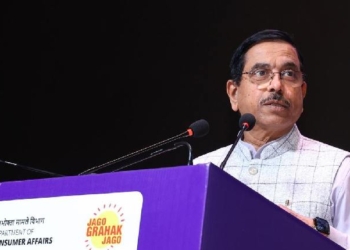New Delhi: If at all high airfares is a multi-year phenomena then high return ratios is likely to attract other big corporate houses with deeper pockets to this low entry barrier sector, JM Financial said in a research.
Akasa Air garnered 5 per cent market share in a year, the report said.
Sudden bankruptcy filing by Go First (6.4 per cent market share and a fleet of 26 airworthy place) in May earlier this year has significantly benefited the existing players by a) making room for a sharp fare increase (18 per cent QoQ, as per the JM fare tracker) ; and b) enabling record PLFs of 90 per cent plus.
Muted ATF price (down 13.7 per cent QoQ) coupled with a stable INR has further boosted profitability prospects for the sector.
The key question lingering in the minds of sector enthusiasts is whether or not to extrapolate this highly profitable period for a year or two, attributing it to the benefits associated with a duopoly market, the report said.
The marginal players (SpiceJet 5.4 per cent /Akasa 4.8 per cent market share) will also see significant balance sheet improvement in this extraordinarily profitable period, giving them the wherewithal to withstand sector cyclicality in future.
The TATA group currently stands at 26.3 per cent domestic market share and intends to take its share sharply higher with its new gigantic fleet order, the report said.
Post Air India’s order for 470 aircraft with Boeing and Airbus (options to purchase additional 370 aircraft), IndiGo has placed an order for 500 Airbus A320 family single aisle aircraft.
This order comes in addition to the current order book of 480 aircraft which are yet to be delivered (expected to be completed by 2030). It will provide IndiGo a further steady stream of deliveries between 2030 and 2035.
Akasa Air has also placed an additional order for four aircrafts a follow-up to the already placed order of 72 aircraft. The company also plans to place a three-digit aircraft order before the end of the calendar year, the report said.
Airport infrastructure is likely to come in at a quicker pace ensuring supply. India is poised for substantial growth in its aviation infrastructure, with the Union Civil Aviation Minister, Jyotiraditya Scindia, announcing plans to increase total airports to 200-220 from 148 by FY25.
Efforts are underway to enhance the capacity of metro airports, with plans to increase overall capacity from the current 221 million passengers per annum (MPPA) to over 456 MPPA in the next decade.
The Draft Aircraft Bill 2023 has a provision that may lead to a cap on airfares imposed by the Centre.
Currently, the Ministry of Civil Aviation and DGCA cannot regulate airline fares. However, the Draft Aircraft Bill 2023 allows them to make rules by notification in the Official Gazette on matters such as disapproval or revision of tariffs of operators of air transport services, the report said.
V.K. Vijayakumar, Chief Investment Strategist at Geojit Financial Services, said the long-term prospects for the industry look bright since there is an explosive growth in air travel and India will be the third largest air passenger market in the world by 2024.
A rising proportion of middle-income households, healthy competition amongst low-cost carriers, infrastructure buildup at leading airports and supportive policy framework has given a positive push to the aviation sector, as per Invest India.
In 2010, 79 million people travelled to/from/or within India. By 2017 that doubled to 158 million, and this number is expected to more than treble to 520 million by 2037. The nation’s airplane fleet is projected to quadruple in size to approximately 2,500 airplanes by 2038.
Currently, the country has 131 operational airports including 29 international, 92 domestic, and 10 custom airports. To meet the growing demand for air travel in India, it has become imperative to increase the capacity of airport infrastructure.
To augment the airport infrastructure the government aims to develop 100 airports by 2024 (under the UDAN Scheme) and expects to invest $1.83 billion in the development of airport infrastructure by 2026.
Till date 74 airports have been developed. More than 2.15 lakh UDAN flights have operated and over 1.1 crore passengers have availed the benefits in UDAN flights so far, Invest India said.
According to the Ministry of Civil Aviation, India is the 3rd largest domestic aviation market. The total number of domestic passenger in 2014 was 60 million which doubled to 143 million in 2020 prior to Covid-19.
International passengers have increased from 43 million to 64 million (increase of almost 50 per cent). In terms of aircraft, the numbers have increased from around 400 in 2014 to 723 in 2023 despite the impact of Covid-19.
Till 2014, only 74 airports were operational in the country. By March 2023, the Centre operationalised another 74 airports as well as helicopters/water aerodromes, and it now aims to take the total up to 220.
Based on the traffic data provided by different Domestic airlines, the passenger count reached an impressive milestone of 636.07 lakh during January-May 2023, reflecting a significant annual growth rate of 36.10 per cent, compared to the corresponding period in the preceding year of January-May 2022, during which the passenger count was 467.37 lakh.
In the month of May 2022, passenger count was 114.67 lakh, which in May 2023 rose to 132.41 lakh, registering a Month-on-Month growth of 15.24 per cent.
The overall passenger number in May this year increased by 3.26 lakhs (2.52 per cent) as compared to April.
(IANS)














